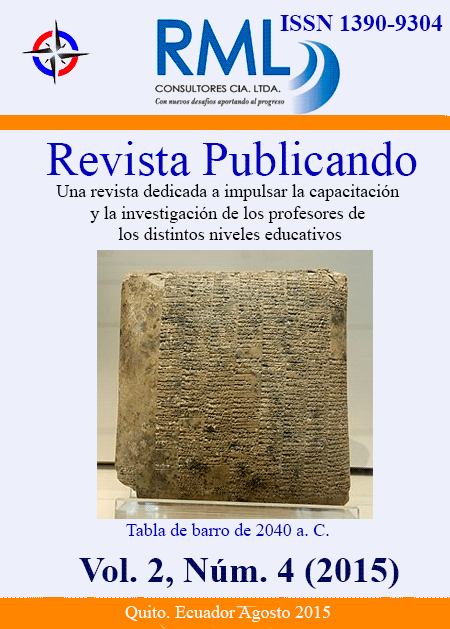Abstract
The perception of students was evaluated in relation in relation to their mastery of the learning objectives formulated in the curricula of the courses: Human Resources I and II, corresponding to the last two semesters of the careers of Business Administration and Public Administration in the Central University of Ecuador
The evaluation was conducted using a survey of 22 questions, each corresponding to a learning objective of the two mentioned courses and students rated their domain with the use of a Likert scale of 5 points. The validation of the internal consistency of the applied questionnaire was conducted with a sample of 21 students and obtained a value of 0.89 for Cronbach's alpha coefficient.
For an interpretation of the results the learning objectives were grouped into five categories that correspond job profile that would be found in the area of Human Resources of a company. It was determined that learning objectives that correspond to the Assessment and Classification of Jobs are those who students say to dominate to a lesser degree, followed by the recruitment and selection of staff. The results obtained suggest to investigate learning objectives from the perspective of student’s criteria, although it may be considered subjective (perception), undoubtedly expresses the degree of security with which they faces possible job responsibilities in a company.
References
Adam, S. (2006). An introduction to learning outcomes. Recuperado 6 Junio 2015 http://www.dvresources.dcu.ie/afi/docs/bologna/a_consideration_of_the_nature_function.pdf
Andrade, X. (2013). Guia para el desarrollo de Resultados de Aprendizaje. Criterio F (pp. 24). Quito: Universidad Central del Ecuador.
Beneitone, P. (2007). Reflexiones y perspectivas de la educación superior en América Latina: informe final Proyecto Tuning América Latina: 2004-2007: Universidad de Deusto Bilbao.
Cano, E. (2008). La evaluación por competencias en la educación superior. Profesorado: revista de currículum y formación del profesorado, 12(3), 11.
González Alonso, J. A., & Pazmiño Santacruz, M. (2015). Cálculo e interpretación del Alfa de Cronbach para el caso de validación de la consistencia interna de un cuestionario, con dos posibles escalas tipo Likert. 2015, 2(1), 16.
Irigoyen, J. J., Jiménez, M. Y., & Acuña, K. F. (2011). Competencias y educación superior. Revista mexicana de investigación educativa, 16(48), 243-266.
Meliá, J. M. J., Such, J. G., & Bakieva, M. (2012). Los resultados de aprendizaje como indicador para la evaluación de la calidad de la docencia universitaria: reflexiones metodológicas. Revista Iberoamericana de Evaluación Educativa, 5(2), 99-115.
Žiliukas, P., & Katiliūtė, E. (2015). Writing and Using Learning Outcomes in Economic Programmes. Engineering Economics, 60(5).

This work is licensed under a Creative Commons Attribution-NonCommercial-ShareAlike 4.0 International License.
Copyright (c) 2019 Marcelo Javier Ríos Mariño
